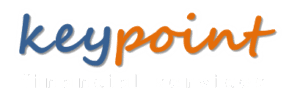
Equity borrowing is using the value in your current home or homes to borrow additional funds. It can also be known as Cash Out or Top Up borrowing. People can use the equity in their home:
- to renovate or rebuild a new house
- to purchase personal assets such as a car or furniture
- to borrow funds that will assist in the purchase of an investment property
- to invest in non property assets such as shares
- to consolidate other loans and credit cards into their home loan
Home Equity
One of the main questions we receive in regards to equity borrowing is whether clients have sufficient equity in their current home to enable them to borrow against it. Generally, it is best to borrow against your home without having to pay lender mortgage insurance (LMI). This means your total loan with the additional funds required doesn’t exceed 80% loan to value ratio (LVR). For instance, if your home is valued at $500,000 and your existing loan is $300,000, then the maximum additional funds you can borrow using the equity in your home is $100,000 to avoid LMI.
Most lenders will allow you to borrow up to 90% of the property value but you will incur additional LMI charges.
Servicing and Valuation
Having equity in your home is not enough to guarantee that you can borrow additional money against the home. You will need to demonstrate that you can service the additional borrowings.
Another key aspect of equity borrowing is the value of the property. The lender will arrange for an independent valuer to determine the value of your property. This can be different to what you or a real estate agent estimates the value of your property to be. Using the example above, if $500,000 is your estimated value of your property and the valuation by a valuer returns with a value of $470,000, then the maximum additional funds you can borrow is $76,000 to avoid LMI.
Structure
Depending on the type of loan you currently have, in most cases you have the choice of either separating the additional loan funds into a new loan facility or adding it to the existing loan.
In some cases, especially for investment purposes, borrowers may like to have multiple loans against their home or homes. This is sometimes referred to as loan splits. Most lenders offer loans that may be split a number of times. This allows clients to manage their borrowings against specific investment assets or purposes. Additional fees may be payable for splits.
Some lenders have portfolio loans that allow you to have a master loan limit against a home asset or security. This loan then allows you to open multiple sub loan accounts for specific purposes.
Contact Keypoint now to discuss your equity borrowing options.
